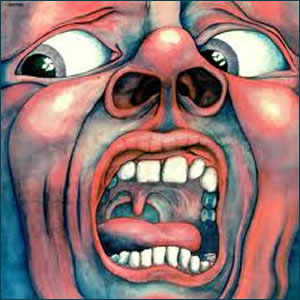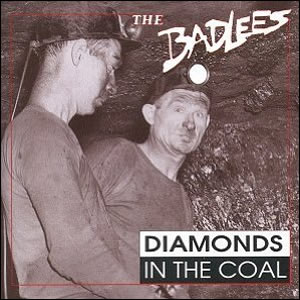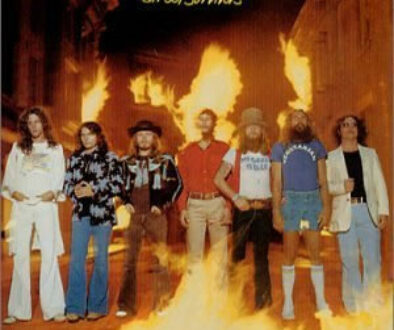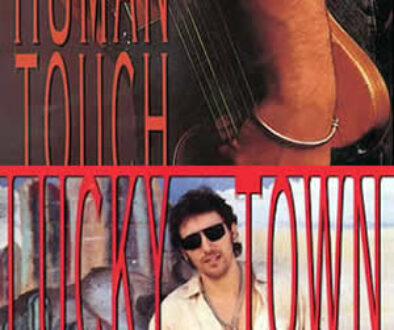In the Court of the Crimson King
by King Crimson
Buy In the Court of the Crimson King
 Seldom does a band release a debut album as critically and financially successful as In the Court of the Crimson King, an Observation by King Crimson. Released in the winter of 1969 the album is filled with echoes of the darkest parts of the decade. Interestingly, although the album had existed since that year, it was not until 34 years later, in 2003, that the true album would be heard. The original recordings of the album had been lost during production, resulting in the release of a musically imperfect composition. This version of the album was the only one available until the master tapes were rediscovered.
Seldom does a band release a debut album as critically and financially successful as In the Court of the Crimson King, an Observation by King Crimson. Released in the winter of 1969 the album is filled with echoes of the darkest parts of the decade. Interestingly, although the album had existed since that year, it was not until 34 years later, in 2003, that the true album would be heard. The original recordings of the album had been lost during production, resulting in the release of a musically imperfect composition. This version of the album was the only one available until the master tapes were rediscovered.
King Crimson has now existed for forty six years going through eight different band iterations but this is the only album released by the band’s original line up. Almost immediately after In the Court of the Crimson King was released founding members Ian McDonald and Michael Giles left the band. Greg Lake followed them out of the band a few months later leaving only Peter Sinfield and Robert Fripp in the band. Sinfield would only last until the first day of January 1972. All of the members of the band would go on to achieve success outside of King Crimson, with the exception of Fripp who remains the keystone of the band to this day.
McDonald went on to found Foreigner, Giles became a session drummer, Sinfield wrote songs for other artists and Greg Lake went onto fame with Emerson, Lake and Palmer. He also had a successful solo career, producing Big Blue Bullfrog‘s 3rd best Christmas Rock Song of all time, “I Believe in Father Christmas”. So it can be argued that In the Court of the Crimson King is the only actual album by King Crimson as the band lost so many members afterwards that it is hard to call it the same band, although Fripp obviously does.
 In the Court of the Crimson King by King Crimson |
|
|---|---|
| Released: October 10, 1969 (Island) Produced by: King Crimson Recorded: Wessex Sound Studios, London, July-August 1969 |
|
| Side One | Side Two |
| 21st Century Schizoid Man I Talk to the Wind Epitaph |
Moonchild The Court of the Crimson King |
| Group Musicians | |
| Greg Lake – Lead Vocals, Bass Robert Fripp – Guitars Peter Sinfield – Lyricist Ian McDonald – Keyboards, Woodwind, Vocals Michael Giles – Drums, Percussion |
|
The album opens with what could arguably be its best song, “21st Century Schizoid Man”. An image of the song’s namesake appears on the albums cover. The song opens with a burst of horns and drums before Greg Lake’s distorted voice kicks in with eerie vocals. Fripp’s guitar solo in the middle of the song might be it’s highlight but there are many to choose from. The innovative use of woodwinds is certainly another huge one. The lyrics read a bit like nonsense except for the line, “Innocents raped with napalm fire,” which is a clear nod toward the Vietnam War. It finishes in what can only be described as a mad crescendo of wicked and wild sounds. As expected, it is fantastic.
From here the album goes in a completely different direction. “I Talk to the Wind” is a slow mellow tune one would expect to hear while relaxing in a meadow. Greg Lake’s voice has a majestic feeling here and Giles drums are subdued into a jazzy rhythm. The flute is given center stage throughout the song by Ian McDonald who provides an enchanting melody. The listener almost feels transported into the magic forest of Shakespeare’s A Midsummers Night’s Dream. Lyrically it sort of seems like a different take on Bob Dylan’s “Blowing in the Wind”. In that song Dylan uses the line ‘the answer is blowing in the wind’ as a metaphor for the ignorance of society. Sinfield uses ‘wind’ itself as a metaphor for essentially the same thing.
Sinfield’s lyrics continue the anti-war themes with “Epitaph”. It is here the album really takes on a dystopian feeling. Lake’s voice is melancholy while Fripp’s guitar returns to add acoustic picking in certain sections. The line, “I fear tomorrow I’ll be crying,” really illustrates the bleak nature of the Cold War. Overall, the song is an extremely pessimistic take on the era but it is wonderful in its darkness.
“Moonchild” is probably the least interesting song on the album. The song essentially describes a perfect and peaceful woman. In many ways this song should have just been called flower child as it is essentially describing that. It is very similar to “I Talk to the Wind” and “Epitaph” in musical composition but adds a symphonic section that simply goes on too long. It takes up most of the song and just doesn’t do enough to entertain the ear.
The album ends with its namesake, “In the Court of the Crimson King”. Musically, the Mellotron is used to its full potential here. The entire song is essentially a fantasy tale involving the Crimson King. The name of the character was chosen because it was given to any monarch who reigned when there was a great deal of bloodshed and civil unrest. This links the song to the albums antiwar concept and the lyrics of it seem to be a metaphor for the band member’s perceptions of the Western World in the late sixties. Near the ending, when the song gets quiet and has only one instrument take center stage, it is really haunting.
In the Court of the Crimson King, an Observation by King Crimson is an extremely interesting work. It inspired many future artists including some out of musical genres. Inspired by this work, Stephen King named his primary villain in the Dark Tower Series the Crimson King. The album is essentially an anti-war album disguised as a fantasy concept album. The deeper meaning of the songs is interesting but a little too obvious in places and none of the songs really say anything different. The message of every one amounts to,” war is bad.” That said, there is a large amount of room for interpretation. It can be said that the album borrows a bit too much from the Moody Blues, Days of Future Passed, even down to the trippy art work of the 21st Century Schizoid Man on the front cover. Despite this, there may not be an album that does a better job of conveying the sense of doom that loomed over people living during the Cold War.
~
Part of Classic Rock Review’s celebration of 1969 albums.





People We’ll Miss, 2016 | River of Rock
December 29, 2016 @ 8:51 pm
[…] most successful hits, “Lucky Man”, at the age of 12 and was the front man for King Crimson before helping form the successful supergroup for which he provided vocals, guitars and […]
Top 9 Most "Far Out" Songs | River of Rock
August 22, 2017 @ 6:01 pm
[…] Man”: http://www.riverofrock.com/wp-content/uploads/2015/04/21st-Century-Schizoid-Man.mp3Classic Rock Review of In the Court of the Crimson King Buy In the Court of the Crimson King by King […]
June 11, 2018 @ 2:39 pm
“Moonchild is probably the least interesting song on the album”
EEEEEEEEEEHHHHHHHHHHHHHHHHHHHH
Feature Fridays: In the Court of the Crimson King by King Crimson – AU Music Library News
October 18, 2019 @ 9:19 am
[…] midst of the Vietnam War, and is “filled with echoes of the darkest parts of the decade” (Cook). While it is presented as a fantasy concept album, many of the lyrics are anti-war, reflective of […]
December 8, 2019 @ 3:50 pm
“Moonchild is probably the least interesting song on the album”
Uhm. I always thought all the songs in this album were equally good. But may be you are right.
August 15, 2020 @ 3:27 am
Turns out, “Moonchild” has evolved to be much more than “the least interesting song on the album”. How so?
First off, Lake’s vocal tempo notably moves through the lyrics in an unpredictable fashion. This in itself is “interesting” to me. Try singing through this song in a karaoke mode. I’m guessing your timing and inflection will be quite off the first few times through.
Secondly, this song subsequently inspired a number very creative and “interesting” animations and covers. These will range from cutesy to spiritual. Most likely, you will settle on a couple of favorites and play them over and over in the wee hours. Check them out on YouTube.
Finally, this song was “interesting” enough to make the soundtrack cut for the quirky and captivating 1998 “Buffalo ’66”. Christina Ricchi’s tap dance routine to “Moonchild” in a bowling alley needs to be seen to be appreciated.
All in all, not bad for a song critics of the day were less than complimentary about; and one King Crimson never performed in concert until 50 years later.
Best rock albums of the ’60s - Global Story Point
March 19, 2022 @ 11:36 am
[…] Crimson’s prog-rock masterpiece nearly was never to be, when the master tapes were misplaced during the production process, which led to the album being released off an imperfect master. Subsequently reissued several times […]
March 13, 2025 @ 10:34 am
A magnificent album. My favorite CD which gets the most play of my large collection. Epitaph is out of this world.